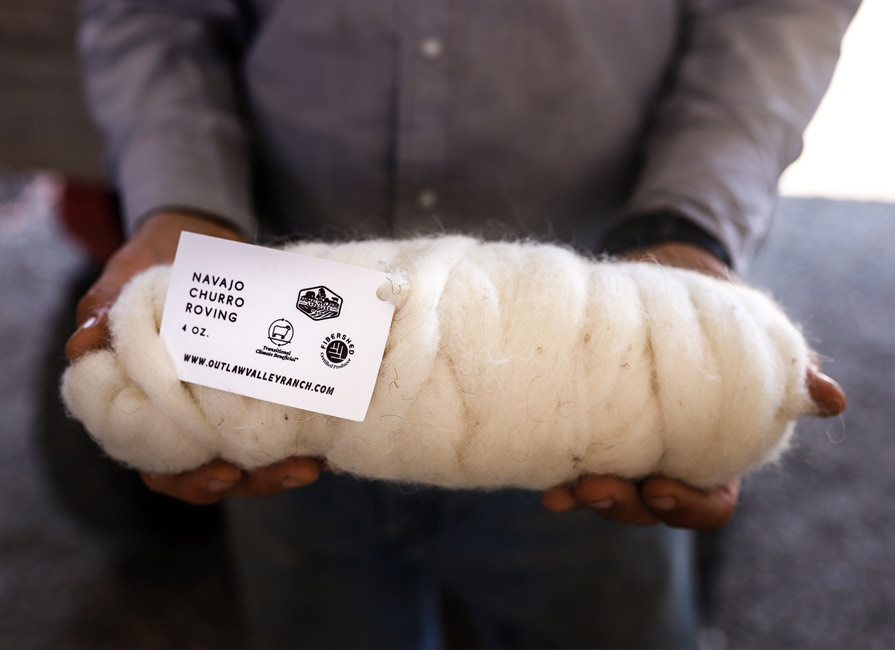Market research shows that today’s consumers are increasingly interested in knowing where their food comes…

Food Safety From Farm To Market
As the prevalence of antibiotic resistant bacteria escalates and food recalls become a daily occurrence, the need to establish sanitary handling practices from the farm to market has become a necessity. Yet the growing public anxiety surrounding the dreaded question of “What’s for dinner?” could present a real opportunity for family farmers to change the face of the food industry by constructing trustworthy local brands for the everyday consumer.
A food safety culture
The U.S. Centers for Disease Control and Prevention reports that one in six Americans get sick from eating contaminated food every year. That’s almost 17 percent of the American population. Now, think back to your most recent bout with a stomach bug: chances are whatever caused it was most likely not on your grocery list for quite some time—if ever again. For those who sell directly to the public, every food poisoning illness not only represents potential damage to your margins, but loss of trust with your brand—and local food producers as a whole.
Developing sound food safety practices for your farm can seem daunting, especially if you are in the early stages of starting your on-farm food business. But a solid program doesn’t have to be complicated. In fact, food safety is simply a concoction of common sense and science you can tailor to meet the needs of your individual enterprise.
Handling and packaging
If you are new to selling at farmers’ markets, be aware that regulations vary by state, so contact your local inspection agency to ensure you meet all necessary safe food handling requirements well before the start of your season. But whether you are new to selling directly to the public or a seasoned veteran, sanitary handling should be a top priority. All food handling should begin with hand washing. Use hot soapy water and scrub for a minimum of 20 seconds. Cover any cuts or sores with appropriate dressings and make sure to wear gloves. Processing tools, including cutting boards, knives and scabbards, should be cleaned and sanitized before each use. One billion bacteria can fit on the size of a pinhead, so just because a surface looks clean doesn’t necessarily mean it is. Cross contamination can happen at any point before packaging, so if you or a team member has a communicable illness, do not handle product.
When it comes to food packaging, choose the best option to fit your market. Vacuum packaging—an increasingly popular and sanitary choice—is wonderfully versatile from fridge to freezer. However, poor seals and leaking packages commonly occur, so have a plan to handle leakers (faulty vacuum seals or poorly crimped clips on ground chubs) to ensure you don’t contaminate the rest of your product—or your customer’s shopping. Consider supplying disposable plastic bags to prevent cross contamination between your products and other customer purchases.
The final packaging step is labeling. In the U.S., the number one reason for product recall is allergen mislabeling. Risks can be minimized with accurate ingredient declaration and proper label approval. Before you take your product to market, ensure labeling is correct and complies with all regulation. Although labeling regulations can be somewhat confusing, there are eight mandatory requirements for your finished product label:
- Product name
- Inspection legend and establishment number—also known as the plant bug
- Handling statement
- Net weight
- Ingredient declaration
- Address line
- Nutrition panel
- Safe handling instructions
- Verifying and obtaining state or federal approval for your labels should become an integral step in your food safety program. AGW offers labeling support—including design and assistance with approval—to certified farmers and ranchers at no charge.
Off to market
As you transfer your product to cold storage, keep a close eye on temperature. Food poisoning bacteria generally grow best in the so-called danger zone of 40°F to 140°F. Best practices and federal regulation require meat to be stored at 40°F or below. Some markets may prohibit the sale of fresh meat. In this case, frozen meat should be stored at 0°F. As a rule, you should verify and document the temperature of your fridge or freezer—at minimum—once a day. Documentation may be as simple as writing temperatures on a calendar or clipboard outside of your fridge or freezer. Alarms are now available that will call or text your cell phone if there is a power outage or if temperatures increase above a set level. If you suspect your product has been in the “danger zone” for longer than two hours, mitigate any risk and condemn the lot. No farmer wants to see products thrown in the garbage, but when in doubt, throw it out. Consumer health and brand integrity cannot be compromised.
If you do not have access to a refrigerated vehicle for transport, ice chests are a simple and effective transport method. Ice chests should be thoroughly cleaned and sanitized before every use to prevent bacterial harborage or residues. Reusable ice packs and dry ice are suitable for keeping temperatures controlled without wreaking havoc on your product labels. Note that market displays should never include temperature sensitive product: Photos of your products, empty egg cartons and dummy packs/displays of your products are safe and simple marketing practices.
Always keep raw and ready-to-eat (RTE) cutting boards, utensils and serving pieces separate, and sanitize them before every market. If you intend to offer food samples, use a meat thermometer to ensure cooked samples reach correct temperatures and offer toothpicks or small disposable forks to avoid handling samples directly and potential cross-contamination from consumers.
Most farmers’ markets require food vendors to establish handwashing stations at their individual stall. Generally speaking, a sufficient hand washing station includes a source of free-flowing water, a catch basin or bucket, hand soap, paper towels and a trash receptacle.
Finally, encourage your customers to refrigerate or freeze their purchases within two hours of purchase verbally and through signage/labeling. Many consumers rely on reusable bags and soft coolers to hold their products while shopping. Although reusable bags are a great eco-friendly alternative to disposables, remind your customers to wash their bags after every use as cross contamination can be a major food safety threat. Where practical, offering to hold purchases in a dedicated cooler for later collection can be extremely popular with customers.
Your customers can be your biggest advocates—or your loudest public critics. Building consumer trust by providing safe and wholesome product is essential to establishing your customer base and growing your business. As with high-welfare farming, when planning your food safety program, an ounce of prevention is worth a pound of cure.
Further information
The Farmers Market Coalition provides extensive tutorials and handling guidelines: farmersmarketcoalition.org.
Contact your nearest State University Extension Programs for information on local regulations and market requirements.
Find expert advice on food safety practices, news and alerts at foodsafety.gov.
Author: Caitlin Aguilar is AGW’s Director of Quality.
Originally published in the Fall 2016 issue of Sustainable Farming magazine.



